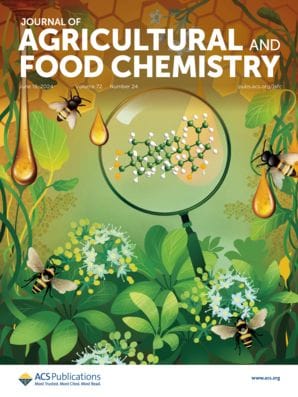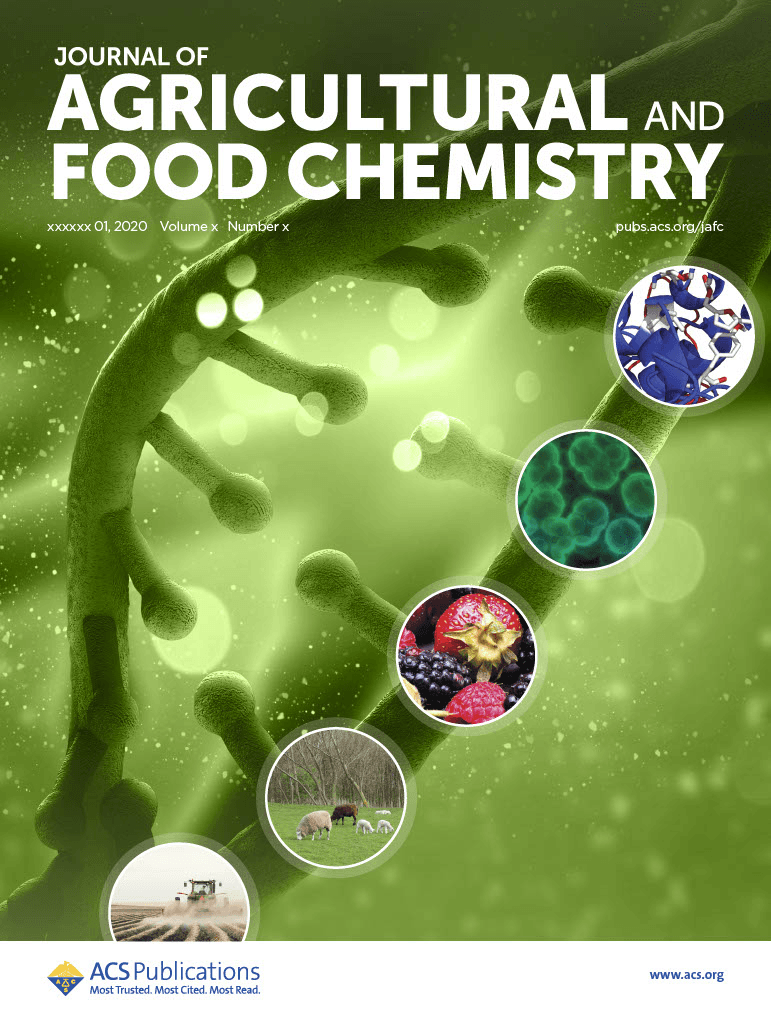A recent study uncorks the role of kokumi peptides in sparkling wine, providing novel insights into how they enhance mouthfeel and amplify rich, lingering flavors.

Sparkling wine is a go-to beverage choice for millions of toasts and celebrations around the world, especially during the holiday season. Its effervescence and celebratory appeal make it the perfect accompaniment for ringing in the new year or marking special occasions with friends and family. But beyond its festive bubbles, sparkling wine offers a wealth of complex flavors that enhance the drinking experience. In addition to the basic tastes of sweet, sour, salty, bitter, and umami, there's another category of sensation that evokes depth and complexity: kokumi. These elusive peptides, known for enhancing mouthfeel and adding a rich, harmonious quality, have now been identified in sparkling wines, thanks to a recent study published in the Journal of Agricultural and Food Chemistry.
Kokumi peptides are amino acid sequences that interact with taste receptors to amplify flavors, creating a sensation of smoothness, fullness, and long-lasting taste. While they have been studied in various culinary contexts, such as with gouda cheese and Thai fermented fish, their presence in wine—especially in sparkling varieties—was previously unexplored. This new study, which examines both model wines and real sparkling wines, reveals that kokumi peptides are not only present but play a significant role in shaping the sensory experience of wine.

Exploring Putative Kokumi Oligopeptides in Classic Sparkling Wines with a UHPLC-ESI-MS/MS Targeted Protocol
The researchers, based in Italy, focused on identifying kokumi peptides in Trentodoc sparkling wines, known for their strict production processes. By analyzing over 30 different samples, they identified 11 kokumi peptides, including prominent dipeptides like Asp-Val, Ala-Pro, and Leu-Ala. These peptides were consistently present in all the wines tested, confirming their widespread occurrence across different vintages and production techniques.
Interestingly, the concentration of these peptides varied between wines, with levels ranging from 9.05 mg/L to 33.29 mg/L, and an average of 19.80 mg/L. The authors also noted that more complex wine matrices, like those in real sparkling wines, made it easier to detect these compounds compared to simpler model wines.
One of the most exciting aspects of the research is how kokumi peptides contribute to the mouthfeel of wine. The study’s sensory tests, which used trained panelists to identify kokumi sensations, showed that wines with higher concentrations of these peptides had enhanced qualities like smoothness, mouthfulness, and a long-lasting flavor profile.
Additionally, the researchers discovered that the concentration of kokumi peptides could vary based on the matrix of the wine: white wine with lower alcohol and acidity levels allowed for better perception of these peptides, while sparkling base wines with higher ethanol content and acidity levels were more complex.
The results have significant implications for winemaking, suggesting that fermentation processes, particularly the activity of yeast, play a key role in the production of kokumi peptides. This insight could lead to new techniques in wine production, where specific fermentation conditions or yeast strains are used to enhance the presence of kokumi compounds, potentially elevating the wine’s overall flavor profile.
As this line of research develops, future studies could explore how to fine-tune the production of kokumi peptides across different types of fermented beverages, not just wine. By better understanding how these compounds influence flavor, winemakers could one day create wines that deliver even more intricate and compelling taste experiences.
Further Explorations: Kokumi
This fascinating flavor sensation extends well beyond sparkling wine. From avocados to parmesan cheese, feast on this selection of additional kokumi-related articles published in ACS journals:
Building a Kokumi Database and Machine Learning-Based Prediction: A Systematic Computational Study on Kokumi Analysis
Yi He, Kaifeng Liu, Xiangyu Yu, Hengzheng Yang, and Weiwei Han*
DOI: 10.1021/acs.jcim.3c01728
Bitter-Tasting and Kokumi-Enhancing Molecules in Thermally Processed Avocado (Persea americana Mill.)
Andreas Georg Degenhardt and Thomas Hofmann*
DOI: 10.1021/jf103848p
A Novel Compound with Kokumi Properties: Enzymatic Preparation and Taste Presentation Evaluation of N-Lauroyl Phenylalanine
Lei Cai, Lu Wang, Xu Zhao, Wenxiang Gao, Yuqin Cheng, Pimiao Huang, and Chun Cui*
DOI: 10.1021/acs.jafc.4c02712
New Method To Produce Kokumi Seasoning from Protein Hydrolysates Using Bacterial Enzymes
Hideyuki Suzuki*, Yuko Nakafuji, and Tomoki Tamura
DOI: 10.1021/acs.jafc.7b03690
Kokumi-Enhancing Mechanism of N-L-lactoyl-L-Met Elucidated by Sensory Experiments and Molecular Simulations
Jing Wu, Zhan Ling, Yunzi Feng, Chun Cui*, and Laihao Li*
DOI: 10.1021/acs.jafc.3c03054
Formation of Kokumi-Enhancing γ-Glutamyl Dipeptides in Parmesan Cheese by Means of γ-Glutamyltransferase Activity and Stable Isotope Double-Labeling Studies
Hedda Hillmann, Jürgen Behr, Matthias A. Ehrmann, Rudi F. Vogel, and Thomas Hofmann*
DOI: 10.1021/acs.jafc.6b00113
Sensoproteomic Characterization of Lactobacillus Johnsonii-Fermented Pea Protein-Based Beverage: A Promising Strategy for Enhancing Umami and Kokumi Sensations while Mitigating Bitterness
Andrea Spaccasassi, Lijuan Ye, Cristian Rincón, Rosa Aragao Börner, Biljana Bogicevic, Arne Glabasnia, Thomas Hofmann, and Corinna Dawid*
DOI: 10.1021/acs.jafc.4c02317
Enhancing Kokumi Sensation and Reducing Bitterness in Acid-Hydrolyzed Vegetable Proteins through Lactate and Thermal Processing
Jing Wu, Panchaonan Huang, Yunzi Feng, Chun Cui*, Jucai Xu*, and Laihao Li*
DOI: 10.1021/acs.jafc.3c04282

